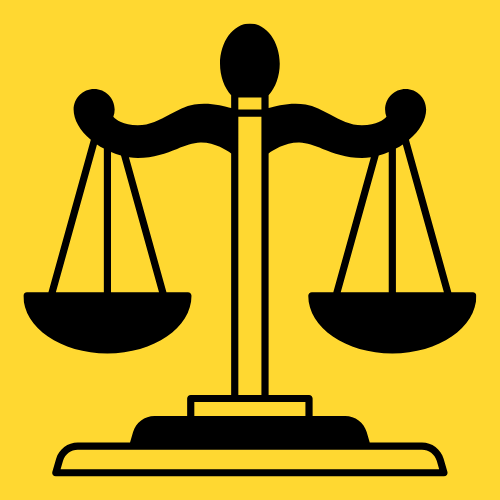NYIGOSO MASOLWA v REPUBLIC 1994 TLR 186 (CA)
Court Court of Appeal of Tanzania - Mwanza
Judge Kisanga JJA, Omar JJA and Mnzavas JJA
CRIMINAL APPEAL NO. 798 OF 1993 F
1 August, 1994
(Appeal from the conviction and sentence of the High Court of Tanzania at Tabora,
Korosso, J)
Flynote
G Criminal Practice and Procedure - Identification of an accused - Identification in
conditions not favourable - Whether reliable.
-Headnote
The appellant appealed against conviction for murder. The conviction was based on
the evidence of the wife of the deceased who was the sole identifying witness that she
identified the accused when their house was broken into by two bandits at night. The
appellant denied ever being at the house of the deceased or slashing H him with a
panga.
Held:
(i) Circumstances prevailing in the room at the time of the attack were not
favourable for proper identification of attackers and the witness never reported
having identified the attacker to the ten cell leader nor to the people who gathered at
the scene. I
1994 TLR p187
Case Information
Appeal allowed. A
No cases referred.
Magongo, for the appellant.
Kaduri, for the respondent.
[zJDz]Judgment
Omar, JA, delivered the following considered judgment of the Court: B
The appellant Nyigoso s/o Masolwa was convicted on a charge of murder contrary to s
196 of the Penal Code and was sentenced to death. He is now appealing. C
PW1 Modosta Luchoga stated that she was at home with her husband the deceased in
old Shinyanga Village on the night of 5 August 1987 when two bandits broke down
their front door and entered, and straight away started attacking her by cutting her
on the head and on the left hand. She fell down and became D unconscious but
before that she said she was able to identify the appellant by the torches each one of
them carried. They flashed their torches straight at her face and the light dazzled her
but the appellant was illuminated on the face by the torch of his colleague and she
was able to identify him as Nyigoso Masolwa the brother of the former wife of her
husband Amos Matiga, the deceased. At that time when E she ran to the front door
her husband dived under the bed and she heard the bandits say `here he is'.
Apparently he was pulled out from under the bed and cut to pieces. When she
regained consciousness after the attackers had gone she F went and reported the
matter to the ten cell leader, one Ngolo Shumbi. She further said that the cell leader
did not ask her who had attacked her. She was feeling severe pains that night that is
why she did not tell the cell leader or any of the persons who had gathered at her
home, who her attackers were. She could not recognise the other attacker. The
appellant whom she identified had put on a red shirt, the other bandit whom she
could not see was wearing a black shirt. G
The rest of the witnesses PW2 and PW3 talked of the dispute between the father of
the appellant and deceased over the bride price of seventeen head of cattle which the
deceased demanded to be given back after he had divorced the sister of H the
appellant. PW2 Leonard s/o Kankutebe who was the acting Divisional Secretary in
Shinyanga was handed a letter by the District Commissioner directing him to collect
seventeen head of cattle from the father of the appellant and hand them to the
deceased as per court order. The handing over was to be done on 6 August 1987. The
deceased died on 5 August 1987 one day earlier. I
1994 TLR p188
OMAR JA
A The appellant in his defence denied over being at the house of the deceased or
slashing him with a panga. He said he was a home on the night of 4 August 1987. He
said he knew about the dispute over bride price and preparations were under way to
pay back deceased's cattle. Mr Magongo learned counsel for the appellant B
submitted that the identification of the appellant by PW1 left much to be desired.
PW1 never mentioned the appellant immediately after the attack. She never reported
having identified the appellant to the ten cell leader or to the people who had
gathered at the scene.
He submitted that PW1 never identified the appellant at all and he quoted the C
following lines in the judgment of the trial court and concluded that they were mere
assumptions. The quoted lines are:
`Believing as I do that each of the two attackers had his own torch and since
they were looking at random to locate the position of the victims it is reasonable to
see the urgency of their part to keep their torch alight all the time. The fact that they
slashed PW1 on the head as well with a D panga they had (were) criminally
disposed to kill PW1 as well so that when she dropped to the ground they had
mistaken her for a dead person. Even if they had not intended to kill PW1 time to
them was very important soon after the accused and the other attacker had got into
the house of the deceased. The possibility of the accused and the other attacker
carelessly E flashing torch light would appear the most reasonable assumption. It is
most likely that in their carelessly flashing the light the accused became exposed to
the blazing torch light held by the other person.'
F These arguments by the Trial Judge Mr Magongo covered in his second ground of
appeal which is `that the finding and the conclusion arrived at by the honourable
Trial Judge in his decision are indefensible both in fact and law.'
G Mr Kaduri learned State Attorney in reply stated that there were two torches, one
was flashed on to the appellant who had already cut her and it was then that she
identified him. Besides, PW1 knew the appellant for quite a long time.
We have gone through the evidence of PW1 the sole identifying witness and are of
the view that circumstances prevailing in that room at the time of the attack were H
not favourable for proper identification of the attackers and therefore the testimony
of PW1 is unreliable in this respect.
We therefore allow the appeal, quash the conviction and sentence, and order that the
appellant be set free unless he is otherwise lawfully held. I
1994 TLR p189
A


%20(10).png)


%20(1).png)
0 Comments
PLACE YOUR COMMENT HERE
WARNING: DO NOT USE ABUSIVE LANGUAGE BECAUSE IT IS AGAINST THE LAW.
THE COMMENTS OF OUR READERS IS NOT OUR RESPONSIBILITY.